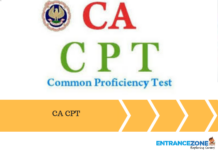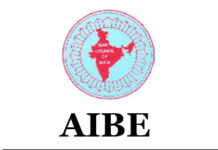For the year 2023, the JEE Main rank/merit list will be determined by the percentile score of each candidate. Percentile scores are calculated by comparing the marks of a given candidate to those of others who have taken the same exam. For those who have taken more than one exam, their higher score will be used for calculating their percentile score.
Admission Open 2023
- Top University & Colleges Official Links, Application & Scholarship Forms.
How Jee Main Rank is Calculated ?
For JEE Main 2023, the rank/ merit list will be determined based on the percentile score of each candidate. If a student has taken the exam twice, then their highest percentile score of the two will be used for calculation.
1.Number of Questions Answered
The number of questions that you answer correctly in JEE Main Exam will directly affect your rank. It is important to note, however, that certain questions will only give you partial points. In cases like these, you will be rewarded a fraction of point depending on how close your answer was to the correct one.
2. Negative Marking
Another important factor that affects JEE Main Rank is negative marking for incorrect attempts. For each incorrect attempt you make in the exam, negative points are deducted from the total score and this consequently results in a decrease in your rank as well. Therefore, during the preparation phase it’s important to gauge yourself correctly and identify sections or topics where you can use your time more efficiently as every mark counts!
3. Difficulty Level of Question Paper
Your rank can also be affected by the relative difficulty level of different question papers set separately for each session in order to maintain parity among candidates with similar knowledge base and prevent any confusion regarding JEE Main Rank calculation with respect to which version was tougher than others.
4. Tie Breaking Criteria
In the event where two or more applicants have achieved equal marks, tie breaking criteria comes into play while calculating ranks through an algorithm wherein applicants appearing higher in allotted slots (that is morning session) are given higher ranks than those who attempt their exams later on (evening session).
5. Age Restriction Policy
Age restriction policy constitutes another important criterion when it comes to allocating ranks since contenders under 25 years age group are considered eligible for appearing in JEE Main Exam prior to taking admission for various courses offered through JEE Advance pathway leading towards IITs and other granted institutions .
6. Number of Appearances
Finally ,candidates striving towards a better ranking must keep tabs on their number of appearances within qualifying period since further attempts amongst them won’t change their scores but would rather push those up hailing down marks-wise below them resulting into higher ranks against their names whilst providing with an edge toward desired admissions into educational institutes offering programmes though common platform based upon same purpose i.e.,Joint Entrance Examination conducted at pre-defined intervals across locations throughout countrywide campus facilities designed respectively fully accredited as secure stanchions keeping up centralized transparency worldwide via systemised methodology assuring proper documentation processes having practiced numerous modifications over times ensuring betterment alongside growth performing requisite actions monthly needing no emphases yet simultaneously implementing basic system committed towards expected results upgradations adaptive techniques simple calculations equating rankings appropriately accommodating actual scores setting criteria standards maintaining firm basis parameters conferring obligations rightly attributed accordingly justly assigned permissibly activities observing changes depending conditions without discrimination throughout indeterminate resolutions














